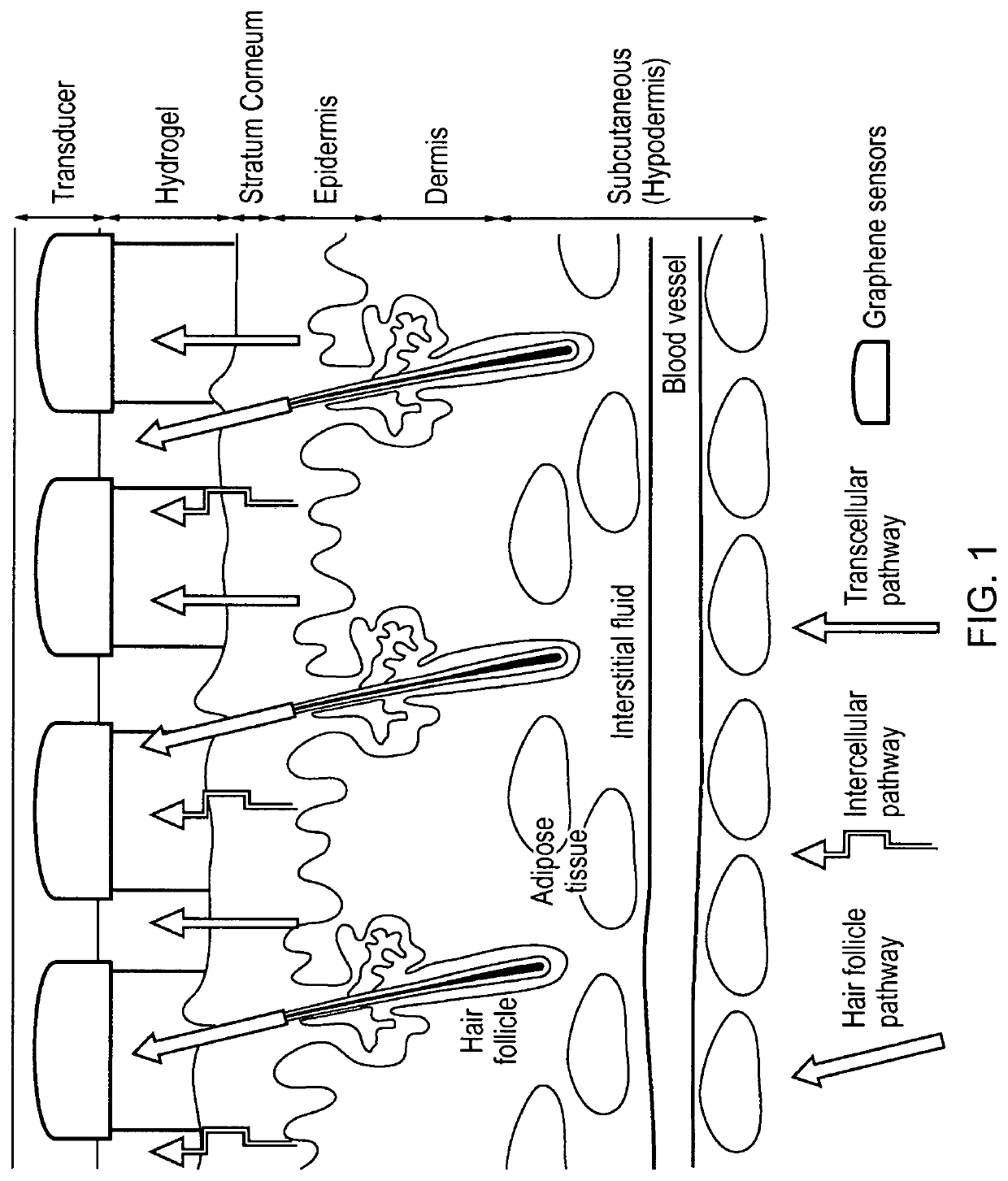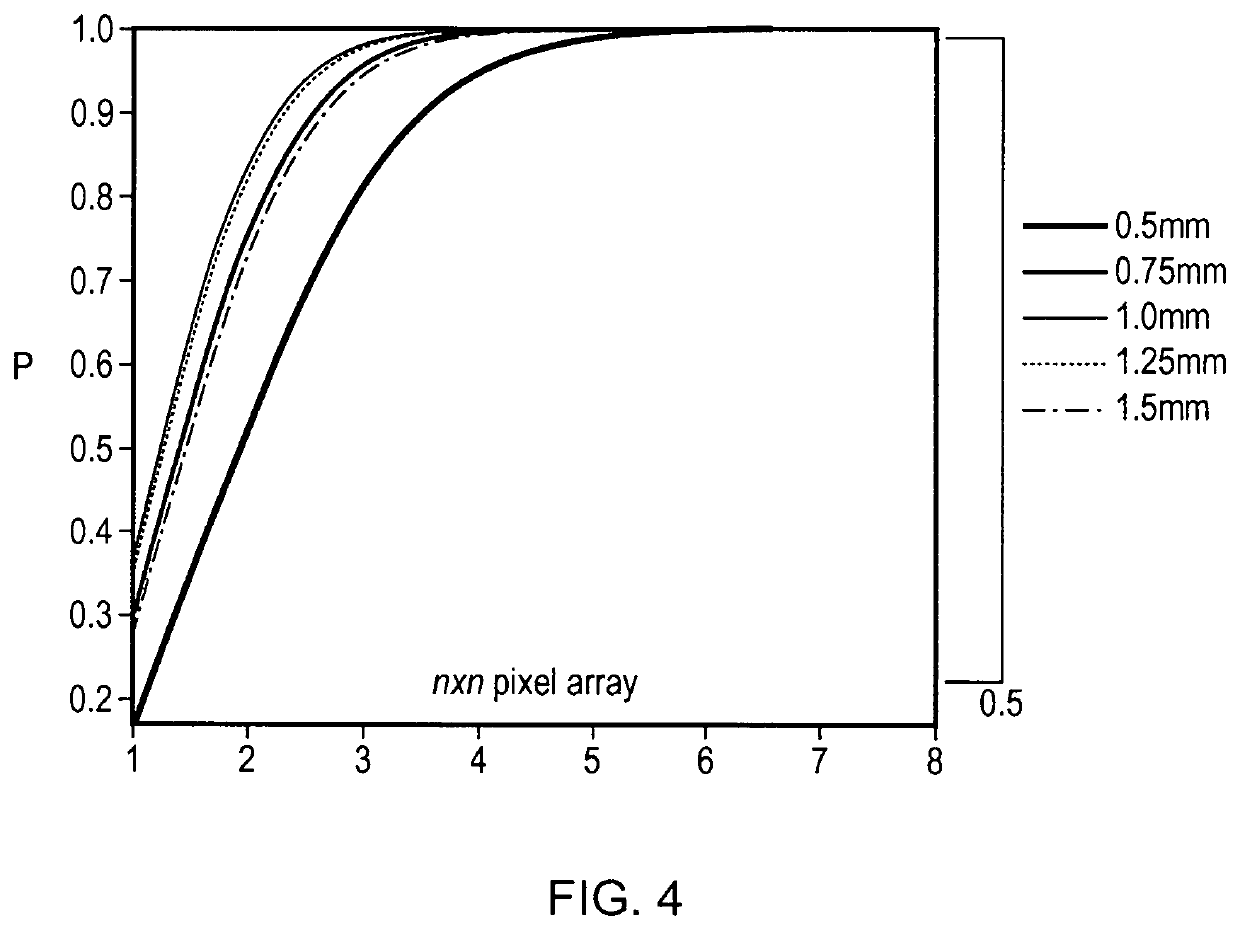Multiplexed transdermal extraction and detection devices for non-invasive monitoring of substances and methods of use
a detection device and complex technology, applied in the field of multi-layered transdermal extraction and detection devices and systems for non-invasive monitoring of substances, to achieve the effect of large skin area
- Summary
- Abstract
- Description
- Claims
- Application Information
AI Technical Summary
Benefits of technology
Problems solved by technology
Method used
Image
Examples
Embodiment Construction
[0065]Non-Invasive Substance / Analyte Monitoring
[0066]While the following discussion focuses on the specific case of glucose monitoring, it will be clear to those skilled in the art that other substances / analytes may be extracted non-invasively through the skin through electro-migration and / or electro-osmosis, which accompanies the process of reverse iontophoresis that is established when an electric field is applied across skin. In the case of glucose, which is a polar and water-soluble substance, but carries no net charge under physiological conditions, its mechanism of iontophoretic extraction is only via electro-osmosis. This process occurs primarily via low resistance, preferential pathways associated with skin appendages such as skin pores, hair follicles and sweat glands (e.g., see FIG. 1 of Weaver et al., Advanced Drug Delivery Reviews, 35:21-39, 1999). These appendages penetrate subcutaneously down to the interstitial fluid which bathes the cells and which contains the subst...
PUM
 Login to View More
Login to View More Abstract
Description
Claims
Application Information
 Login to View More
Login to View More - R&D
- Intellectual Property
- Life Sciences
- Materials
- Tech Scout
- Unparalleled Data Quality
- Higher Quality Content
- 60% Fewer Hallucinations
Browse by: Latest US Patents, China's latest patents, Technical Efficacy Thesaurus, Application Domain, Technology Topic, Popular Technical Reports.
© 2025 PatSnap. All rights reserved.Legal|Privacy policy|Modern Slavery Act Transparency Statement|Sitemap|About US| Contact US: help@patsnap.com



